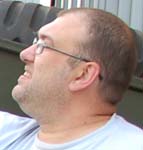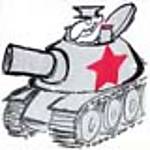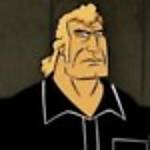1⁄35Panzerhaubitze 2000 build
10
Comments
Rear Hull
This area of the model takes three stages to complete, and other than a difference of opinion between me and Meng as to the sequence of events, this is a fairly basic area with regards to modelling skills. This does of course depend on any improvements you may decide to make.
Step 6 covers assembly of the rear hull. This moulding is not up to the standard I have come to expect of Meng; I should make clear that the portion of the component that will be visible is fine, but the other side is very untidy with large moulding plugs that have not been cleanly removed. As I said, no issues as regards the finished model, but it does concern me when a company lets their high standards slip. The instructions direct you to assemble the whole of the rear hull before adding it to the model, but unless you have dainty fingers I would ignore this advice and attach it to the model after adding part D41 and D8. These two, specifically D41, must be added prior to attachment in order that the rear hull plate is in the correct position. The bars on the rear hull are used, it would seem from reference pictures, for holding a tarpaulin or similar, and the kit parts are fair but would look better if replaced with shaped wire. This option was made easy for me as one of the frames broke as I removed it from the sprue, so I replaced it with 0.5mm wire, which while smaller than the kit frame, I feel is a more realistic diameter than can be achieved in plastic. I am disappointed to see the handle moulded in place, it would have looked better as a separate part. There is a light cluster to be added here, and so you will need to decide how to approach this.
It is step 7 where the instructions tell you to add the rear hull to the main hull. You can do that at this stage if preferred, but there is the risk of easily breaking or knocking some details off, hence my recommendation to do it in the previous stage, prior to the addition of the delicate parts. You also add a brace to the hull and a support for the upper hull; make sure you this part is located fully home before adhesive is used. The small parts attached at this stage can be glued from the inside, making a clean attachment easy.
Step 8 finishes this area off with the addition of the rear steps, tow hitches and door mechanism. The tow hitches locate very well and no issues were encountered. I did take a few attempts to get the steps to sit correctly, but it was more an issue with not having the daintiest of fingers rather than a weakness of the model. The door mechanisms, which I believe are for securing the doors in an open position, were a tricky fit: the locators are well placed but the fit is tight.
Upper Hull
This area of the model is tackled between stages 9 to 13 for the most part. One thing I do not like about this part is that you are instructed to assemble the entire upper hull but not to install it until stage 15; I feel that this put the finer parts that you add at risk of damage or even loss unless extreme care is taken.
Step 9 covers the addition of the on board tools. The tools have moulded on clamps for the most part, but these are reasonably good and once attached painting can be done by sliding a piece of paper under them as a mask. It is at this step that you add the engine grilles; I have to say that they are a very good fit and so are easy to place, and some thin CA glue added with a syringe needle will cleanly and firmly secure them. There are two very small photo etched parts to be attached to the left of the turret opening, and which have the potential to test not only your patience but also your eyesight. These two are dependent on which version of the Panzerhaubitze 2000 you decide to build.
Step 10 will also test your eyesight and how steady your hands are when it comes to the photo etched retaining straps for the track ice cleats. The attachment of these parts is not too difficult to actually apply, but the bending will be a pain, due to the very small area being bent. The rest of the parts added here, and even the rest of the photo etched parts, is straightforward and starts to give an impression of what your finished model will look like detail wise.
Comments
Hi Darren,
thanks for sharing this extensive build. Very helpfull.
Good to see one of the, if not the, best guns in the world at this moment as a decent model. You did a lot of detailed work!
The only remark, please, if allowed, is the camo pattern. Pls., do have a look at Google and see that the overal impression of these howitsers is far less red, but more dark. Less than 20% of the surface should be painted brown. Furthermore, the edges of the camo should be rather sharp.
But.....
All together, i like the build and your comment.
P.
NOV 21, 2014 - 07:43 PM
Regarding the end comments, yeah the Greek version is tempting, LM Decals recently released decals for it.
LINK
Cheers,
Christophe
NOV 21, 2014 - 08:08 PM
Impressive build Darren, Congratulations !
This could be something for me, i will return to do 1/35 scale AfVs in the future, as well the 1/72 scale kits.
Got a Meng Leopard, may i can did out a build here.
Cheers
Bernd
NOV 21, 2014 - 08:51 PM
Paul if you take a look at the darker pictures it shows the colour as it appears to the naked eye, the red colour occured after I balanced the pictyre in Photo Shop. I am surprised on your comments about camouflage layout as I used ref pics online and checked them against what Meng offered, I accept it is not 100% but it is close.
Thank you for your comments guys.
NOV 22, 2014 - 12:45 AM
Hi Darren, i took the liberty to comment since I have worked with these guns as an art Lcol! Actually, now I am rather confused since neither the Germans nor the Dutch have this camo pattern, so is it your intention to go further into the 4 color Greek scheme?
NOV 22, 2014 - 10:34 PM
Paul; No that is the finished main painting and I was sure I was close, I am a little rattled now as I believed I had got it right, but thank you for pointing out I have got it wrong. As you have worked on these can you show me some pics of the tools on the vehicle please, I assume they are overall green with some wear and tear present.
NOV 23, 2014 - 12:29 AM
If you compare this German scheme (photo from Prime Portal) you can see that the brown pattern in the middle is different from your portrayal. There are lots of photos on the Internet to verify - I don't know if your pattern is based on the instructions but it never hurts to double check!
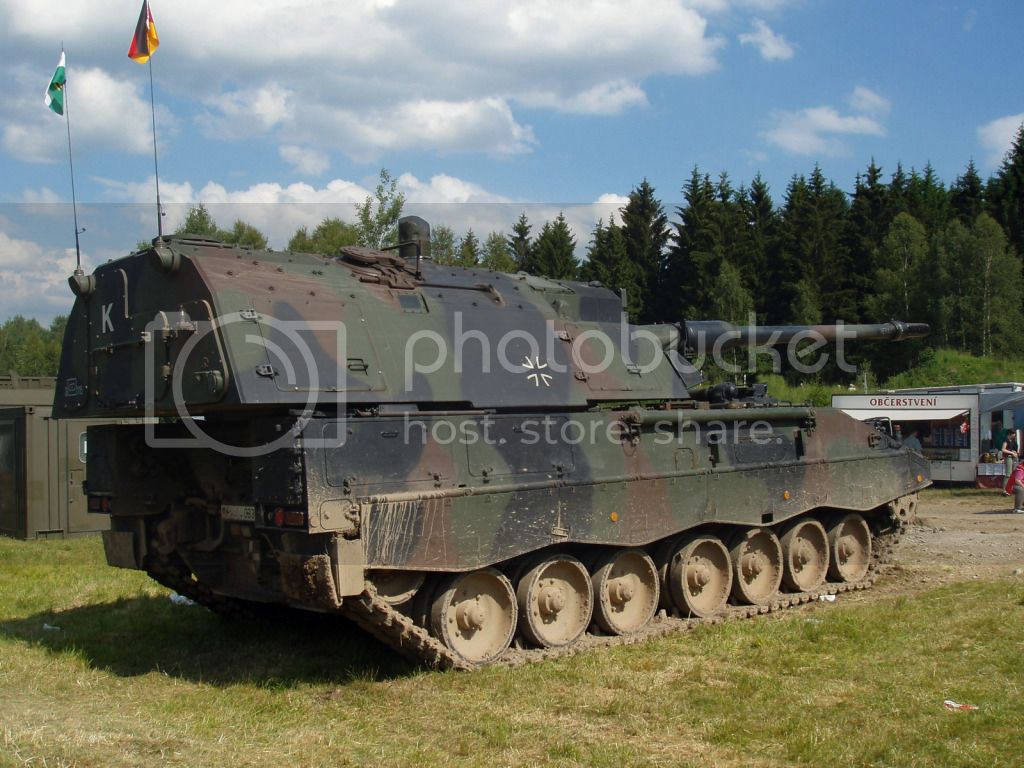
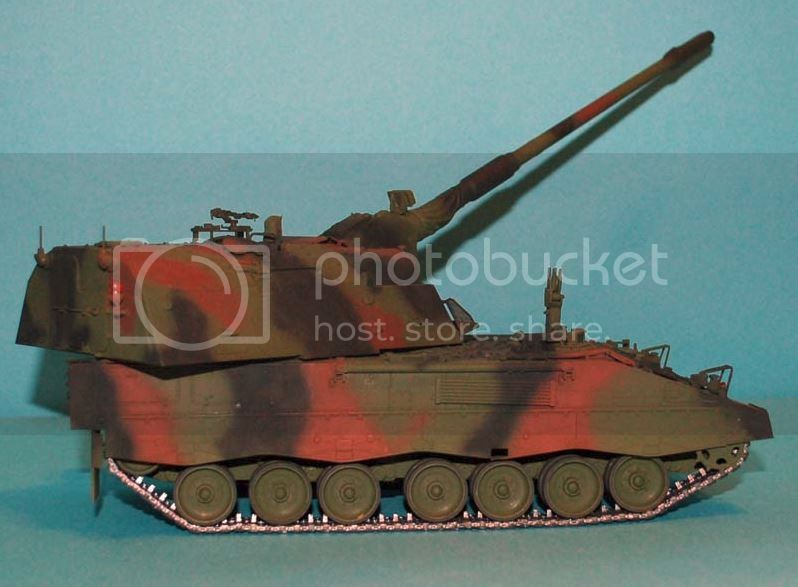 Jim
Jim

 Jim
JimNOV 23, 2014 - 01:47 AM
Hi Daren,
first of all, I believe that the most important of modeling is the fact that one enjoys building and painting.
So, I am not supposed to ordeal on that.
But the camouflage pattern on the PzH2000, if used by the German or Dutch army, show differrent patterns. Spots, no bands! Only in Afghanistan, mud was used to camouflage them, though one can discuss the (non)sence of that, based on the huge defence around these important vehicles, static and while travelling (Their value was so high that they were flown back to Europe in stead of using road and sea transport from Afghanistan)
About the tools: they were supplied together with the vehicles, thus having a NATO olive color, with, in rare cases, clear wooden parts. However, most of it was just green, close to the base vehicle colour. The wear and tear is rather rare since these vehicles do "suffer" from budget reductions, thus being used rather seldomly. Money makes the world go around, even in the army!
NOV 23, 2014 - 01:53 AM
Thank you for your review and reports of the build. Since the finished model was photographed under poor lighting, I suggest that the reddish colour i the result of the camera trying to make a picture, and not be too accurate about it. I am a modeler, and have considerable photographic experience, having worked in labs and studios during the Kodak years, in both black and white and colour, in mixing and monitoring, quality control, etc. The model looks great Darren!
MAY 17, 2016 - 04:35 AM
Copyright ©2021 by Darren Baker. Images and/or videos also by copyright holder unless otherwise noted. The views and opinions expressed herein are solely the views and opinions of the authors and/or contributors to this Web site and do not necessarily represent the views and/or opinions of Armorama, KitMaker Network, or Silver Star Enterrpises. All rights reserved. Originally published on: 2014-11-22 06:01:46. Unique Reads: 22763























